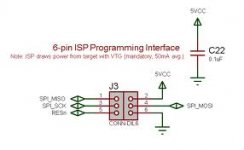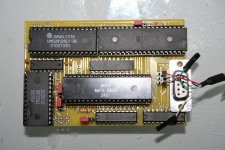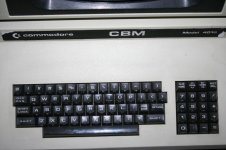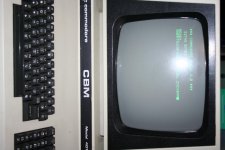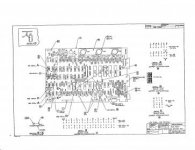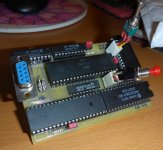<?php
/*
convertroms.php
Convert binary ROM files into a data structure for the PETvet device
Copyright (C) 2012 Michael Hill
This program is free software: you can redistribute it and/or modify
it under the terms of the GNU General Public License as published by
the Free Software Foundation, either version 3 of the License, or
(at your option) any later version.
This program is distributed in the hope that it will be useful,
but WITHOUT ANY WARRANTY; without even the implied warranty of
MERCHANTABILITY or FITNESS FOR A PARTICULAR PURPOSE. See the
GNU General Public License for more details.
You should have received a copy of the GNU General Public License
along with this program. If not, see <http://www.gnu.org/licenses/>.
Contact the author at bitfixer@bitfixer.com
http://bitfixer.com
*/
$roms = array();
// ====================
// begin ROM specification
// modify this to create custom ROM sets for the PETvet
// first specify all ROMs you want included
//
// for each ROM, include a line in the format
// $roms[<ROMNUMBER>] = array("<ROMFILENAME>",<ROMSIZE>,<DESTROMADDR>);
// ROMSIZE is the size of the rom in bytes
// DESTROMADDR is the address where this ROM will be loaded into the PETvet's memory.
// add ROMs to list
// basic 4.0 set
$roms[0] = array("basic-4-b000.901465-23.bin",4096,0xb000);
$roms[1] = array("basic-4-c000.901465-20.bin",4096,0xc000);
$roms[2] = array("basic-4-d000.901465-21.bin",4096,0xd000);
$roms[3] = array("edit-4-n.901447-29.bin",2048, 0xe000);
$roms[4] = array("kernal-4.901465-22.bin",4096, 0xf000);
// basic 2.0 set
$roms[5] = array("basic-2-c000.901465-01.bin",4096,0xc000);
$roms[6] = array("basic-2-d000.901465-02.bin",4096,0xd000);
$roms[7] = array("edit-2-n.901447-24.bin",2048,0xe000);
$roms[8] = array("kernal-2.901465-03.bin",4096,0xf000);
// 80 col screen editor 60 Hz
// $roms[9] = array("edit-4-80-b-60Hz.901474-03.bin",2048,0xe000);
// 40 col screen editor with CRTC and 50 Hz
$roms[9] = array("edit-4-40-n-50Hz.901498-01.bin",2048,0xe000);
// Selectable ROM sets
$romsets = array();
// Now define the ROM sets which will be selectable by jumpers on the PETvet
// To specify a set of ROMs, add a line in the format:
// $romsize["<ROMSETNAME>"] = array(<ROM1>,<ROM2>,...);
// The ROMSETNAME is a text name of 10 characters or less which describes this ROM set. This is just for your own reference.
// ROM1,ROM2,etc are the indices of previously specified ROMS.
// basic 2.0 set
$romsets["BASIC2"] = array(5,6,7,8);
$romsets["BASIC4 40C"] = array(0,1,2,3,4);
$romsets["BASIC4 80C"] = array(0,1,2,9,4);
// memory mapping
// define the memory map for the 64k address space
// memory settings for each segment include:
// "PASSTHROUGH" - disable PETvet for this segment and just pass reads and writes through
// "WRITETHROUGH" - enable PETvet for writes, and pass these writes through to the mainboard as well
// "READONLY" - enable PETvet for reading only, disable for writes. Used for ROM segments
// "REPLACE" - enable PETvet for both reads and writes, isolating CPU from mainboard
// each segment of the memory map is defined:
// $map[] = array(<SETTING>, <STARTADDR>, <ENDADDR>);
// after defining the full memory map, add it to the list of memory maps like so:
// $memorymaps[<index>] =
$memorymaps = array();
$map = array();
// addresses 0x0000-0x7fff - enable SRAM and isolate from mainboard
$map[] = array("REPLACE", 0x0000, 0x7fff);
// addresses 0x8000-0x8fff - writethrough to capture video memory
$map[] = array("WRITETHROUGH", 0x8000, 0x8fff);
// addresses 0x9000-0xafff - readonly ROM segment
$map[] = array("READONLY", 0x9000, 0xe7ff);
// addresses 0xe800-0xefff - I/O space, passthrough all reads and writes
$map[] = array("PASSTHROUGH", 0xe800, 0xefff);
// addresses 0xf000-0xffff - readonly ROM segment
$map[] = array("READONLY", 0xf000, 0xffff);
$memorymaps[0] = $map;
$map = array();
// addresses 0x0000-0x7fff - enable SRAM and isolate from mainboard
$map[] = array("REPLACE", 0x0000, 0x3fff);
$map[] = array("READONLY", 0x4000, 0x7fff);
// addresses 0x8000-0x8fff - writethrough to capture video memory
$map[] = array("WRITETHROUGH", 0x8000, 0x8fff);
// addresses 0x9000-0xafff - readonly ROM segment
$map[] = array("READONLY", 0x9000, 0xe7ff);
// addresses 0xe800-0xefff - I/O space, passthrough all reads and writes
$map[] = array("PASSTHROUGH", 0xe800, 0xefff);
// addresses 0xf000-0xffff - readonly ROM segment
$map[] = array("READONLY", 0xf000, 0xffff);
$memorymaps[1] = $map;
// now define the memory map settings for each jumper position
$memorymapsettings = array();
$memorymapsettings[0] = 0;
$memorymapsettings[1] = 1;
$memorymapsettings[2] = 0;
$filename = "romsets.bin";
// end ROM specification
// ==================
// generate binary file for ROM sets
// filename for petvet code binary
// specify the binary file which contains the PETvet main program
$code_binary_filename = "petvetcodev10.bin";
// output filename for the new binary update file
// this is the file that will be sent to the PETvet over XMODEM
$output_binary_filename = "petvetupdate50Hz.bin";
$total_rom_settings = 8;
$header_filename = "romsets.h";
function calculate_header_length($romset)
{
$num_roms = sizeof($romset);
// 2 bytes per address
$address_size = $num_roms * 2;
// add fixed length - set ID, name, and number of roms, plus 2 bytes for memory map address
$header_length = $address_size + 12 + 2;
return $header_length;
}
$romsets_index = array();
$index = 0;
foreach($romsets as $name=>$rs)
{
$romsets_index[$index] = array("name"=>$name, "roms"=>$rs);
$index++;
}
$total_specified_roms = sizeof($romsets);
$total_header_length = 0;
print_r($romsets_index);
// calculate total header length for ROM sets
for ($r = 0; $r < $total_rom_settings; $r++)
{
if ($r < $total_specified_roms)
{
$romset_index = $r;
}
else
{
$romset_index = 0;
}
$romlist = $romsets_index[$romset_index]["roms"];
$hl = calculate_header_length($romlist);
$total_header_length += $hl;
//print "hl $hl\n";
}
print "Total header length: $total_header_length\n";
// calculate start addresses for ROMs
$curr_addr = $total_header_length;
$rom_start_addr = array();
foreach($roms as $i=>$rom)
{
print "Rom $i\n";
$this_rom_length = $rom[1];
print "Length $this_rom_length\n";
print "Start Address: $curr_addr\n";
$rom_start_addr[] = $curr_addr;
// increment address
$curr_addr += ($this_rom_length + 4);
}
// now calculate start addresses for memory maps
$memmap_start_addr = array();
foreach($memorymaps as $i=>$mm)
{
print "Memory Map $i\n";
print "Start Address: $curr_addr\n";
$memmap_start_addr[] = $curr_addr;
// increment the address by the size of a memory map
$curr_addr += 128;
}
//print_r($rom_start_addr);
$fp = fopen($filename, "wb");
// now write out header
for ($i = 0; $i < $total_rom_settings; $i++)
{
if ($i < $total_specified_roms)
{
$index = $i;
}
else
{
$index = 0;
}
//print "index is $index\n";
$ri = $romsets_index[$index];
//print_r($ri);
$thisname = $ri["name"];
$num_roms = sizeof($ri["roms"]);
print "name $thisname\n";
print "nr $num_roms\n";
$addresses = array();
foreach($ri["roms"] as $romindex)
{
$addresses[] = $rom_start_addr[$romindex];
}
print_r($addresses);
// now write out data
// 1 byte: set index
fwrite($fp, pack('C', $i));
// 10 bytes: set name
for($b = 0; $b < 10; $b++)
{
if ($b >= strlen($thisname))
{
fwrite($fp, ' ');
}
else
{
fwrite($fp, $thisname[$b]);
}
}
// 1 byte: number of ROMs
fwrite($fp, pack('C', $num_roms));
// 2 bytes per rom address
foreach($addresses as $addr)
{
// back big endian unsigned short
fwrite($fp, pack('n', $addr));
}
// 2 bytes: address of memory map
fwrite($fp, pack('n', $memmap_start_addr[$memorymapsettings[$i]]));
}
// now write out ROM contents
foreach ($roms as $rom)
{
// write 4 byte header for this rom
// first 2 byte destination address
fwrite($fp, pack('n', $rom[2]));
// then 2 byte ROM length
fwrite($fp, pack('n', $rom[1]));
// get contents of this ROM and write out
$romcontents = file_get_contents($rom[0]);
// write each byte
for ($i = 0; $i < $rom[1]; $i++)
{
fwrite($fp, $romcontents[$i]);
}
}
// now write out memory maps
foreach ($memorymaps as $mm)
{
$thismap = array();
foreach ($mm as $memseg)
{
// get this segment of memory
$segtype = $memseg[0];
$startaddr = $memseg[1];
$endaddr = $memseg[2];
// show information
print "$segtype: $startaddr, $endaddr\n";
// get start and end indices into the memory map
$startind = floor($startaddr / 512);
$endind = floor($endaddr / 512);
print "s $startind, e $endind\n";
// generate memory map for this segment
for ($i = $startind; $i < $endind; $i += 2)
{
// write mapping bytes for the selected type
if ($segtype == "PASSTHROUGH")
{
$thismap[$i] = 0x00;
$thismap[$i+1] = 0x00;
}
else if ($segtype == "WRITETHROUGH")
{
$thismap[$i] = 0x08;
$thismap[$i+1] = 0x00;
}
else if ($segtype == "READONLY")
{
$thismap[$i] = 0x00;
$thismap[$i+1] = 0x09;
}
else if ($segtype == "REPLACE")
{
$thismap[$i] = 0x09;
$thismap[$i+1] = 0x09;
}
}
}
// write the memory map
for ($a = 0; $a < 128; $a++)
{
//print $thismap[$a]." $a\n";
fwrite($fp, pack('C', $thismap[$a]));
}
}
fclose($fp);
// also write header for inclusion in source code
$fpheader = fopen($header_filename, "w");
fprintf($fpheader, "unsigned char romdata[] __attribute__ ((section (\".ROMdata\"))) =\n");
fprintf($fpheader, "{\n");
$bincontents = file_get_contents($filename);
$numbytes = strlen($bincontents);
print "num bytes: $numbytes\n";
for ($i = 0; $i < $numbytes; $i++)
{
$byte = $bincontents[$i];
//print "byte: $byte\n";
$dec = unpack('C', $byte);
$dec = $dec[1];
$hex = dechex($dec);
$addrhex = dechex($i);
fprintf($fpheader, "\t0x$hex,\t//address $i (0x$addrhex)\n");
// split into two arrays
if ($i == 32765)
{
fprintf($fpheader, "};\n\n");
fprintf($fpheader, "unsigned char romdata2[] __attribute__ ((section (\".ROMdata2\"))) =\n");
fprintf($fpheader, "{\n");
}
}
fprintf($fpheader, "};\n");
fclose($fpheader);
// now create new firmware binary for updating PETvet
// attach code segment to ROM contents
// open code segment
$codebin = file_get_contents($code_binary_filename);
$output_bin = $codebin . $bincontents;
$fp_output = fopen($output_binary_filename, "wb");
fwrite($fp_output, $output_bin);
fclose($fp_output);
?>

